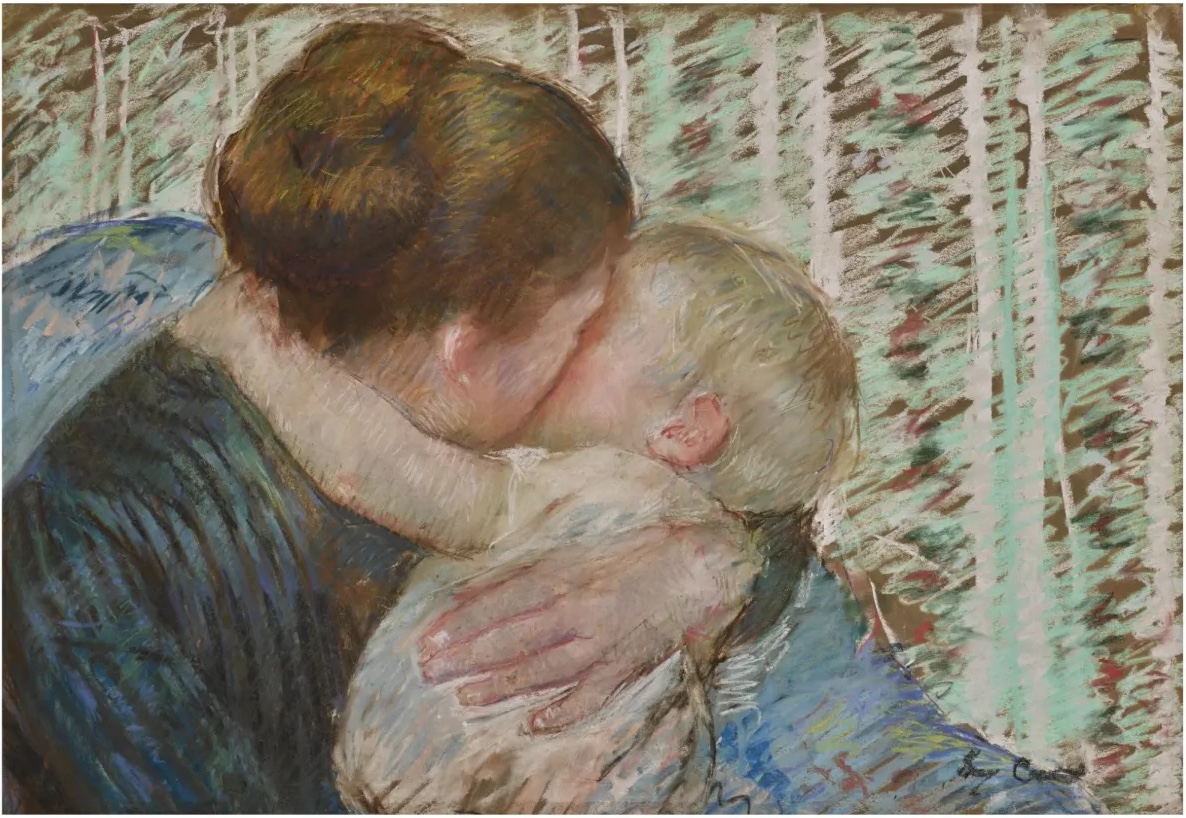“Mary Cassatt at Work” exposes the dedication, drive, innovation and independent spirit of American Impressionist painter Mary Cassatt.

Paintings, pastels and prints in the magnificent exhibition on view through Jan. 26 at the Legion of Honor in San Francisco are chronologically presented and thematically organized to highlight Cassatt’s technical and artistic progression.
The works demonstrate her bold explorations, mastery of multiple techniques and determination to live as a successful professional artist operating in the male-dominated 19th century art world.
The exhibition, the first North American retrospective of Cassatt’s work in 25 years, includes selections from the Fine Arts Museums of San Francisco’s permanent collection—among them, the striking “Portrait of Mrs. Robert Cassatt”—and more than 100 pieces on loan from the National Gallery of Art in Washington D.C., the Philadelphia Museum of Art, Museum of Fine Arts Boston and private collections.
While Cassatt (1844–1926) is best known for elevated portraits of women engaged in daily activities and domestic tasks, this exhibition also illustrates her impact on French Impressionism, artists of her time and after, and processes she used to expand and inform painting and printmaking techniques.
Yet her vivid portrayals of women and children in domestic settings—themes not addressed by her male colleagues—were radical for the period. They offer unique perspectives by exposing social realities of her time, speaking to gender, privileges of affluence, benefits of access to travel and education, and the labor, care, love and intensity of mother-child connections and working women (including herself).
Cassatt was friend and collaborator of Edgar Degas, whose paintings often featured dancers, musicians and opera singers. Cassatt’s “In the Loge” (1878) similarly depicts a theatrical scene, but Cassatt sets her eye on a genteel woman in the audience. Wearing a black outfit and headdress boldly set against the opera house’s velvety red and illuminated white-yellow tones, she peers through opera glasses. Across the way, a man leans out, also with binoculars, gazing not at the stage but at the woman. The question inherent: Who is more voyeur, the woman or the man?
Painted in the same year, “Little Girl in a Blue Armchair” depicts the young daughter of a friend of Degas’ slumping inelegantly, petticoats showing, in a lush, freely rendered upholstered blue chair.

“It’s a painting of an unruly girl by an unruly girl,” said Emily A. Beeny, Fine Arts Museums of San Francisco chief curator of the Legion of Honor. The painting, which was submitted and rejected for the 1878 Paris Exposition, was included in Cassatt’s Impressionist debut the following year.
There is great depth to the exhibition’s pastel works on brown paper, which bring out the medium’s texture while maintaining sensitivity and vibrancy. In “A Goodnight Hug” (1880), a paid model embraces and kisses a toddler in front of wallpaper rendered in swift strokes crackling with energy. Even so, the eye is mostly drawn to a simple, pink-brown line undulating between their faces, which nearly dissolves.

“The Long Gloves” (1886), a pastel on blue-gray paper discolored to brown, is among the works purchased in 2024 by FAMSF for the Legion of Honor’s centennial. The subject is busy, focused on adjusting her glove stretching to her upper arm. Showcasing Cassatt’s refined technique, its lines are not overworked. The young woman’s face is drawn in clear but not harsh lines. Raw paper is left exposed where pastels would serve no purpose other than to distract the viewer from the central image.
Perhaps the exhibition’s highlights are works that document her process in chronicling drypoint and etching techniques, which led to her famous “Set of Ten” color print series. Multiple proofs of “The Bath” (1891) arranged progressively on one wall outline her experimental practice and final processes.

Nearby, other works resonate. The masterful “Mother’s Kiss” (1890-91) aquatinted in blue-gray, olive green and soft umber tones, is rendered in exquisitely etched lines reminiscent of Japanese artwork.
Although Cassatt in later years often paid domestic employees to serve as models in images with and without children, her paintings of family members are somehow most stunning, perhaps due to having greater access and familiarity.
In “Lydia at a Tapestry Frame” (1881), Cassatt captures her sister’s supreme concentration in a tenderly presented face; yet, with muscular strokes of paint, the image also conveys sense of abandon and freedom from “women’s work” or burdens of the day.
Cassatt’s previously mentioned portrait of her mother, with its detailed face and hands, reveal a woman as the artist likely saw herself and all women: strong, hardworking, steady, focused, their minds and imaginations whirling away under the body’s surfaces.
“Mary Cassatt at Work” continues through Jan. 26, 2025 at the Legion of Honor, 100 34th Ave., San Francisco. Admission is $35 general; $32 senior; $26 student; $15 for ages 6-17 at famsf.org.
The post Legion of Honor’s Mary Cassatt retrospective reveals a radical American artist appeared first on Local News Matters.
